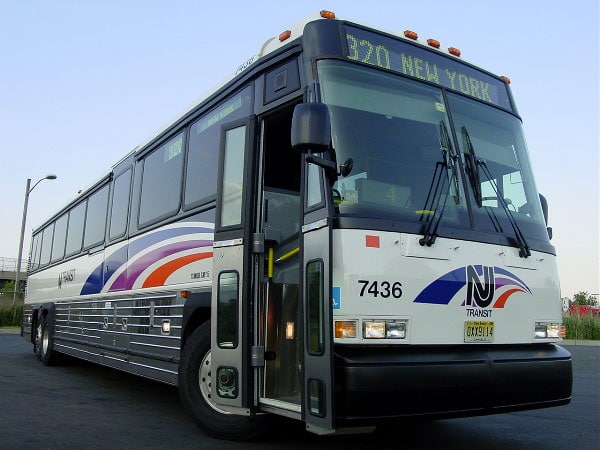Bus Maintenance Facility
Location: Hamilton Township, New Jersey
Regulatory Program: Underground Storage Tank Program
Duration: 2000 to 2005
Summary: UST / Petroleum Product Remediation and Chlorinated Solvent Source Evaluation
Princeton Geoscience designed, implemented and managed supplemental soil and groundwater delineation activities at this active bus maintenance and parking facility. This included completing delineation of petroleum hydrocarbons in the area of eight abandoned underground fuel storage tanks, manual free product evaluation and assessing the extent and possible sources of trace-level tetrachloroethylene (PCE) concentrations in site groundwater.
Bus maintenance facility-specific activities included aerial photograph review and interpretation, soil and groundwater sampling using a Geoprobe® direct-push sampling rig, monitoring well installation monthly groundwater elevation monitoring and product recovery. In addition, BIOCHLOR and Disperse groundwater models were run to evaluate potential contaminant migration. Soil sampling identified a large area of petroleum impacted soil, but concentrations of Total Petroleum Hydrocarbons and Volatile Organic Compounds in soil exhibited only marginal exceedances of NJDEP Soil Cleanup Criteria. Initial results of product recovery suggested very little mobile, recoverable product was present, as product thicknesses measured in wells were low (less than 0.1 feet) and recharge of product to the wells was slow. In addition, negligible dissolved-phase contamination was noted, with only a single marginal exceedance of the NJDEP Class IIA Groundwater Quality Standard for benzene at one location. Therefore, our report to NJDEP included a proposal to suspend product recovery and to implement natural attenuation for petroleum hydrocarbons in soil and groundwater.
During the drought of 2001, water levels in the shallow aquifer dropped by over four feet onsite and greater thicknesses of petroleum product (up to one foot) were noted at monitoring well locations. Based on follow-up discussions with NJDEP, multi-phase extraction was performed during two separate eight-hour events and found to be no more effective than manual methods in removing subsurface product. Other active product recovery methods were evaluated and found to be currently impracticable, based upon physical, technological and/or financial constraints. Specific factors involved included soil conditions, fuel oil viscosity, the presence of buildings and subsurface utilities and the absence of a significant impact to ground water.
Princeton Geoscience discussed the challenges of the project with the NJDEP Case Manager and reached an agreement whereby the client (following training by Princeton Geoscience) manually performs product recovery approximately twice per week as an interim measure. This arrangement resulted in significant cost savings.
In addition to the product recovery, activities included evaluating other means by which petroleum product may be removed from the subsurface at the site. Strategies for performing laboratory bench-scale and field pilot tests to evaluate surfactant-enhanced multi-phase extraction were developed. Product thicknesses onsite diminished significantly along with an increase in groundwater elevation which took place following recovery from a drought. Therefore, Princeton Geoscience planned to implement the bench-scale and pilot tests after a period of shallower groundwater levels and increased product thickness at well locations.
Princeton Geoscience identified the source of the trace-level PCE detections in groundwater samples collected at several locations onsite through review of operations onsite and on the upgradient property. Initially, an upgradient source was suspected, but the pattern of PCE detections identified during subsequent sampling did not support this hypothesis. Princeton Geoscience reviewed Material Safety Data Sheets for products used onsite and found that an aerosol brake cleaning fluid used in the garage area near the observed PCE detections consisted of PCE and a CO2 propellant. We recommended an alternate, non-chlorinated brake cleaning product and suggested usage procedures for minimizing potential releases, which were implemented by the client. Because the source of the PCE impacts has been eliminated, the trace-level groundwater impacts are expected to rapidly diminish to non-detectable concentrations.
